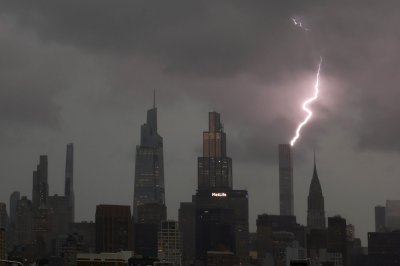The flash of lightning and roar of thunder can be quickly followed by the wheezing gasp of an asthma attack, a new study reveals. Thunderstorms appear to trigger sharp increases in asthma-related emergency room (ER) visits, according to researchers scheduled to report their findings at the American College of Allergy, Asthma & Immunology’s annual meeting in Orlando, Florida.
“These results confirm that thunderstorms can pose a serious health risk for people with asthma, even in the United States,” said lead researcher Dr. Diala Merheb, an internal medicine resident at the University of Kansas Medical Center. “Because storms are unpredictable, patients and health care providers should include storm-specific precautions in asthma action plans,” she added in a news release.
The phenomenon known as “thunderstorm asthma” is well-documented and has been acknowledged by the World Allergy Organization. However, researchers note that studies have been limited in pollen-heavy parts of the U.S., leaving the risk to Americans less understood until now.
For this study, researchers analyzed nearly 4,500 asthma-related ER cases across three hospitals in Wichita, Kansas, between 2020 and 2024. They found that about 14% of all cases occurred on just 38 days with thunderstorms—representing only 2% of the calendar days during the study period.
Patients made an average of nearly 18 asthma-related ER visits per day during thunderstorms, compared to just three visits per day during calmer weather.
Harvard Medical School explains that thunderstorms can increase the likelihood of asthma attacks due to the way these weather events unfold. Cold downdrafts concentrate pollen and mold, which are then swept up into humidity-thick clouds. During a thunderstorm, wind, humidity, and lightning break these allergens down into smaller particles that can be easily inhaled deep into the lungs. Wind gusts further concentrate these small particles, increasing the chances that large amounts are inhaled at once.
“If you or your child has asthma, it’s smart to think about thunderstorms the same way you prepare for high-pollen days or cold weather,” said researcher Dr. Selina Gierer, an allergist with the University of Kansas Health System. “Understanding triggers and having a clear plan can help avoid emergency room visits.”
It is important to note that findings presented at medical meetings should be considered preliminary until they are published in a peer-reviewed journal.
For more information on thunderstorm asthma, Harvard Medical School offers additional resources.
https://www.upi.com/Health_News/2025/11/07/thunderstorms-asthma-attacks-study/5201762525259/
